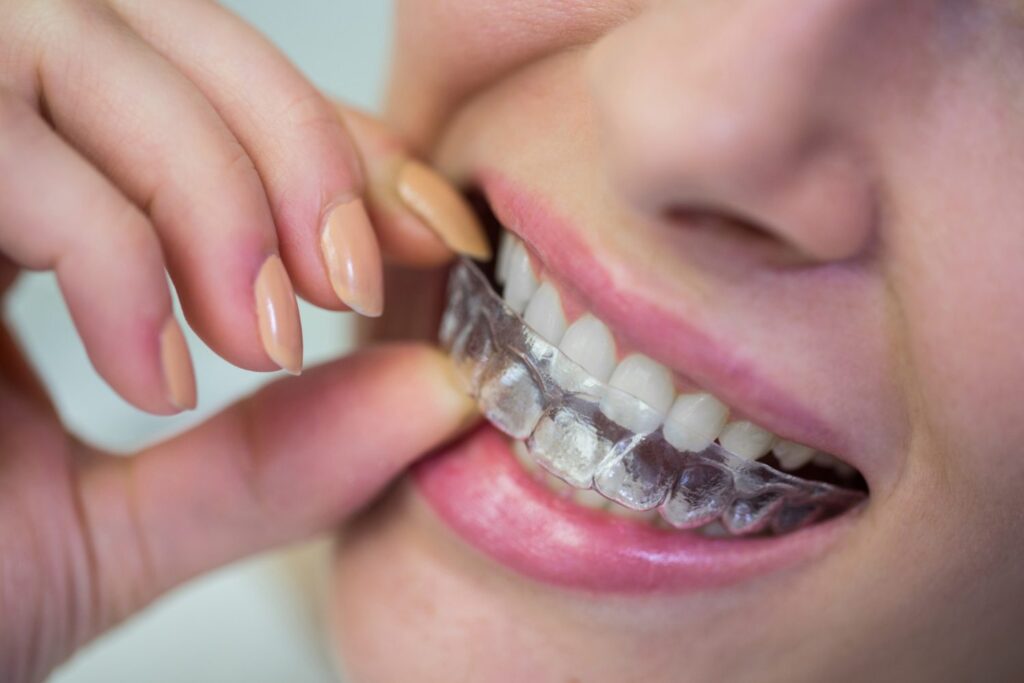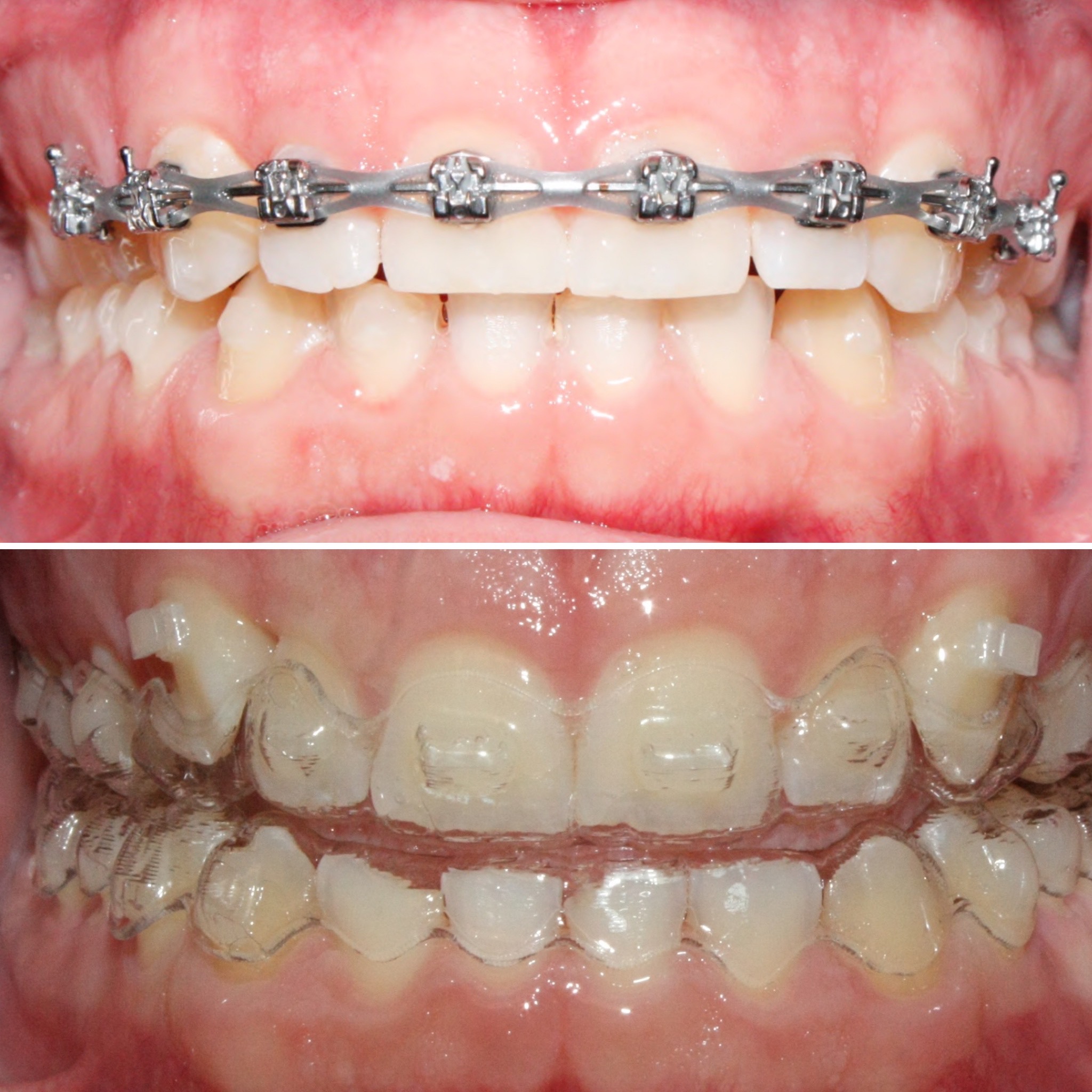Success Stories: How Invisalign Changed Lives and Enhanced Confidence
Success Stories: How Invisalign Changed Lives and Enhanced Confidence
Blog Article
Invisalign vs. Standard Braces: Which Choice Is Right for You?
When taking into consideration orthodontic therapy, the choice in between Invisalign and conventional braces provides numerous crucial aspects that warrant mindful evaluation. Invisalign offers a very discreet alternative with detachable aligners, while standard dental braces offer a more visible yet effective option for serious misalignment. Each choice includes distinct benefits and downsides connected to appearances, convenience, treatment duration, and price. Comprehending these subtleties is important for making an informed choice that aligns with your individual choices and way of life. The concern remains: which choice will finest meet your orthodontic demands and expectations?
Overview of Treatment Alternatives

On the other hand, standard braces contain steel brackets and cords that are bound to the teeth. This technique applies continual pressure over time to achieve positioning. While reliable for complex orthodontic concerns, traditional dental braces require regular brows through for modifications and can posture difficulties in keeping dental health due to the difficulty of cleaning up about wires and brackets.
Both options have their qualities, and the option typically pivots on details dental conditions, way of life choices, and person compliance. Eventually, seeking advice from an orthodontic professional is important for determining one of the most suitable treatment plan customized to private demands. Comprehending the subtleties of each alternative can considerably influence the total success of orthodontic treatment.
Aesthetic Considerations
A significant aspect influencing the selection in between Invisalign and conventional braces is the aesthetic appeal each treatment supplies. Invisalign aligners are crafted from clear plastic, making them virtually undetectable when put on. This discreet appearance is especially appealing to teenagers and grownups who might feel uneasy regarding their orthodontic treatment. The ability to maintain an all-natural smile throughout the positioning procedure can substantially improve the patient's confidence in professional and social settings.
In comparison, typical dental braces include steel brackets and cables, which can be much more obvious. While developments in orthodontic modern technology have actually resulted in the development of smaller sized braces and tinted elastics, typical braces still maintain an even more conspicuous profile. For some people, the presence of dental braces may deter them from looking for essential treatment.
Ultimately, the choice between Invisalign and traditional dental braces may rest on personal preferences regarding aesthetics. People that prioritize discernment often favor Invisalign, while those who are much less worried about visibility might select standard dental braces. Recognizing the aesthetic implications of each alternative is vital for making an educated decision that straightens with one's lifestyle and preferences.
Comfort and Convenience

In regards to ease, Invisalign aligners are detachable, making it possible for patients to appreciate their favored foods without constraint and maintain ideal oral hygiene. Brushing and flossing are simplified, as the aligners can be obtained during these regimens, whereas typical dental braces need cautious steering around cords and braces.
Additionally, Invisalign's dynamic system permits fewer orthodontic brows through. Individuals normally receive multiple sets of aligners simultaneously, which can improve the therapy process and reduce time invested in the orthodontist's chair. On the other hand, conventional dental braces require regular modifications, making them less practical for those with hectic routines. Invisalign. Generally, the comfort and convenience of Invisalign make it an appealing choice for lots of individuals looking for orthodontic therapy.
Therapy Period and Efficiency
While both Invisalign and typical braces work in fixing oral imbalances, the duration of therapy can differ considerably in between the 2 alternatives. Usually, Invisalign treatment can take anywhere from 12 to 18 months, depending upon the intricacy of the instance. The clear aligners function by slowly moving teeth into their wanted positions, and routine follow-ups with an orthodontist assistance make sure progress stays on course.
On the other hand, traditional dental visit this website braces commonly call for a longer dedication, typically varying from 18 months to 3 years. This is because of their fixed nature and using cords and brackets, which can be extra effective for intricate instances and extreme misalignments (Invisalign). The therapy effectiveness of standard dental braces is well-documented, as they permit precise adjustments and better control over tooth motion
Inevitably, the option in between Invisalign and standard dental braces may rest on both the expected therapy period and the particular dental problems handy. Consulting with an orthodontist is critical, as they can offer tailored recommendations based on specific needs, making sure the selected method straightens with wanted timeframes and end results.
Cost Contrast and Insurance Alternatives
Expense plays a considerable function in the decision-making procedure for individuals considering orthodontic treatment, whether deciding for Invisalign or traditional dental braces. On average, the price of Invisalign ranges from $3,000 to $8,000, while traditional braces typically cost in between $2,000 and $6,000. Elements affecting these costs include the complexity of the instance, the duration of treatment, and geographical place.
Insurance policy protection can substantially influence out-of-pocket expenditures. Several dental insurance strategies supply partial protection for orthodontic therapies, yet the specifics can differ extensively. It is crucial for clients to examine their insurance coverage plans to determine the level of insurance coverage for either option. Generally, traditional dental braces may be more frequently covered by insurance strategies compared to Invisalign, which some insurers categorize as a cosmetic treatment.
Furthermore, numerous orthodontic methods supply adaptable layaway plan, making both therapy choices more obtainable. Clients should ask about prospective funding choices and discount rates for upfront repayments. Evaluating the overall cost, including insurance coverage advantages and repayment strategies, is vital for making a notified decision that lines up with both aesthetic choices and spending plan considerations.

Conclusion
In recap, the selection in between Invisalign and standard dental braces rests on multiple variables, including aesthetic preferences, convenience, treatment duration, and price. Invisalign supplies a very discreet, removable alternative that helps with oral hygiene and dietary adaptability, while standard dental braces might be better for complicated oral concerns and often come at a reduced rate point. Inevitably, examination with an orthodontist is necessary to evaluate specific situations and figure out one of the most ideal treatment alternative for accomplishing optimum dental placement.
When thinking about orthodontic treatment, the selection between Invisalign and conventional braces offers numerous vital aspects that merit cautious assessment.Contrasting Invisalign and traditional braces discloses unique treatment alternatives for orthodontic correction.While both Invisalign and conventional dental braces are effective in remedying dental misalignments, the period of therapy can vary considerably between the two choices.Cost plays a significant function in the decision-making process for people thinking about orthodontic treatment, whether deciding for Invisalign or typical dental braces.In summary, the view choice in between Invisalign and conventional braces hinges on numerous factors, including aesthetic choices, comfort, therapy period, and expense.
Report this page